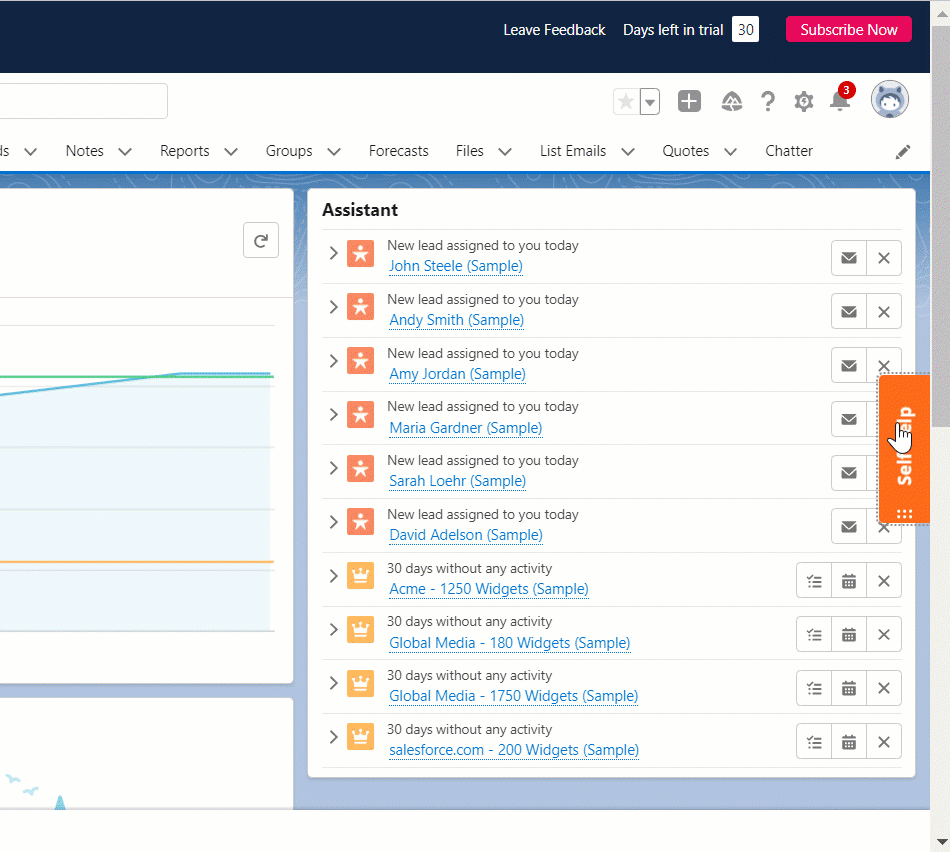

Adelina Karpenkova


Change is an inevitable and constant aspect of any organization’s growth and evolution. To successfully navigate these transformative journeys, businesses need an effective change management strategy in place.
KPIs play a pivotal role in measuring the success and impact of change management initiatives. These metrics provide valuable insights into the effectiveness of change efforts, the level of employee engagement and adoption, and the overall progress toward desired outcomes.
In this article, we’ll discuss common change management metrics to track and how to develop your change KPIs, as well as how these KPIs and metrics help overcome process inconsistencies, provide agility, keep your change projects on track, and achieve your intended outcomes.
Here are nine of the most common (and useful) KPIs and metrics for organizations to track their change management success:
Change reject rates measure the number of proposed changes that are rejected or never implemented. It helps track the level of internal resistance, obstacles, or challenges faced during an organization’s change process – often all caused by more deep-rooted issues such as company culture, structure, undertrained employees, or outdated technologies.
High change reject rates can indicate organizational or change-specific issues such as:
Monitoring and analyzing your change rejection rate helps identify these potential barriers, among others, to successfully drive change implementation. By addressing these issues, organizations can improve their change management processes, increase stakeholder acceptance, and more effectively achieve their strategic goals.

Employee engagement metrics help assess employees’ perception towards a change initiative, as well as their level of involvement and commitment. By tracking employee satisfaction or engagement, organizations gain insights into how employees perceive and respond to the change, which can influence their productivity and overall performance.
Change leaders can measure relevant employee satisfaction KPIs through NPS and pulse surveys, as well as anonymous employee surveys.
When implementing a new change, organizations face reskilling challenges. To overcome this, companies must invest in general change management training programs for their entire workforce, as well as contextual training for employees impacted by specific change projects.
But how do change leaders measure training effectiveness?
Training metrics track the success and impact of change onboarding and reskilling initiatives related to the change, whether that is a new software application, process, workflow, or team structure.
A few metrics to track post-change training effectiveness include:
These change metrics help to gauge the readiness of the workforce and enable employees with the skillsets to take advantage of a new change initiative.
User adoption rate measures the percentage of employees who have successfully adopted a new change, such as a new digital application, process, or workflow. It provides insights into the level of acceptance, utilization, and integration of new processes, systems, or initiatives within a team or organization.
Tracking user adoption helps determine the overall effectiveness of the change and the extent to which it has been embraced by the workforce. Low user adoption significantly hinders an organization’s ability to achieve ROI from their technology investments.
While user adoption rate measures the overall adoption of a change project or initiative, time-to-adoption measures the amount of time it takes to achieve an expected business outcome from a change transformation.
To measure this change KPI, monitor the time to adoption to know how long it takes for employees or users to fully adopt the change from the moment it’s introduced. This metric provides valuable insights into the speed and efficiency of the adoption process.
Change success rates measure the overall success of a change initiative in achieving its intended objectives or outcomes. It assesses the extent to which the change has been implemented effectively and has delivered the expected benefits.
There are several ways to measure change success rate depending on the nature of the change. You may tie it to the adoption rate, the organization’s KPIs, employee engagement, or other metrics that align with the objectives of the change initiative.
In this case, stakeholders may include leaders, managers, employees, customers, suppliers, or any other individuals or groups impacted by the change. Measuring stakeholder satisfaction is essential to gauge their level of support, engagement, and perception of the change initiative’s success.
To measure it, you need to develop a quantifiable metric that will indicate stakeholder satisfaction. This can be done through rating scales, satisfaction scores, or direct feedback.
You need to track change costs to assess the financial impact of change initiatives and ensure effective resource management. Change costs are a sum of all expenses associated with the implementation of the change. They include employee training costs (direct and hidden), technology costs, process disruption costs, employee time and resources, and other expenses.

The ultimate goal of measuring all the mentioned change KPIs boils down to assessing the overall impact of the change initiative on the organization’s performance and financial outcomes. The final step is to measure the ROI of the change initiative.
Start by identifying the financial benefits or gains resulting from the change initiative. This includes increased revenue, cost savings, productivity improvements, reduced operational expenses, improved customer satisfaction, or any other measurable financial impact.
Assign monetary values to these benefits and subtract the total change cost from the total financial benefits. Divide the net financial benefit by the total investment costs and multiply the result by 100 to express the ROI as a percentage.
To determine the extent of the impact, compare the post-change results against the baseline or pre-change measurements.
There’s no one-size-fits-all selection of KPIs that you can choose for your project. To define the right KPIs for your change management initiative, follow these simple steps.
What are you aiming to achieve through the change? Clearly articulate the specific objectives of the initiative.
Whether you’re aiming at increased operational efficiency, enhanced customer experience, or improved employee engagement, you should come up with a measurable objective aligned with the organization’s strategic goals.
For example, instead of stating “improve operational efficiency,” a specific objective could be “reduce the average process time by 20%.”
The next step is determining the specific areas within the organization that will be influenced by the change initiative. Analyze the organization’s existing processes and workflows to identify areas where the change initiative is likely to have the greatest impact.
Consider the potential risks and opportunities associated with the change initiative. Identify areas where the change may introduce new risks or challenges and areas where it presents opportunities for improvement or competitive advantage.
Prioritize the identified areas of impact based on their significance and alignment with the change objectives. Focus on the areas that have the highest potential for positive impact.
Break down your change journey into achievable milestones to make it easier to assess the progress and success of the change initiative. For instance, if you’ve previously decided to “reduce the average process time by 20%,” the milestones may sound like:



You need to set benchmarks to compare your milestones and objectives against. Benchmarks serve as reference points or standards against which you can measure your performance. They can be based on industry best practices, internal historical data, or external performance comparisons.
You should also establish a deadline for achieving each change objective. Align the timeframes with the overall change timeline and the milestones identified. This provides a sense of urgency and creates a clear target to work towards.
How are you going to gather the data that will help you measure your change management KPIs? You need a consistent strategy to collect data systematically throughout your change initiative.
Here’s how you build one:
Before you’re ready to kick off the monitoring process, you must decide how often you’ll be generating reports for your change management KPIs. Reporting is a way to transform raw data into meaningful information that supports decision-making and highlights progress.
Consider the needs of different stakeholders and the availability of data to determine the appropriate reporting frequency. This can range from real-time updates on dashboards to periodic reports, such as monthly or quarterly updates.
The reporting mechanisms should provide clear visual reports that effectively present the data. Use charts, graphs, and visualizations to enhance comprehension and highlight trends or patterns. Organize the information logically, ensuring that the most important data is displayed prominently.
Where possible, automate the reporting processes using data visualization tools. Automation will streamline the generation of reports, reducing manual effort, minimizing errors, and allowing for faster data analysis.
Next comes continuous monitoring. Establish a system to collect and analyze relevant data on an ongoing basis by using automated data collection, real-time dashboards, regular surveys, and feedback mechanisms to gather information.
By keeping your finger on the pulse, you’ll be able to identify any gaps or areas for improvement that require attention.
Once you’ve collected and evaluated the data from your change management KPIs, use it to take informed actions. As you analyze the data, prioritize the areas that demand immediate attention. Focus on those with the potential to make the most impact on your organization.
With insights in hand, it’s time to transform them into actionable plans. Evaluate the resources at your disposal, such as budget, people, and time. Allocate them strategically, considering the scope and scale of the adjustments required.
Follow these tips to select KPIs that add value to your change management process.
Each KPI should reflect a specific aspect of your desired outcome and contribute to measuring the success of your change initiative. For example, if your objective is to improve customer satisfaction, relevant metrics may include customer feedback scores, net promoter score (NPS), or customer retention rates.
Avoid vague metrics. For instance, if you’ve chosen employee satisfaction as one of the KPIs, you should also specify how you’re going to measure it and what benchmark you’ll be comparing it against.
Instead of focusing on purely financial aspects of change management, a balanced scorecard allows you to recognize the value of all performance drivers, even non-financial ones. This framework provides a comprehensive view by incorporating multiple perspectives, such as financial, customer, internal processes, and employee growth.
Select KPIs that are actionable and within your control. Focus on metrics that can guide decision-making and drive meaningful action. Avoid KPIs that are solely influenced by external factors beyond your organization’s reach.
Leading and lagging indicators are types of measurements used to assess business performance. Leading indicators provide early warning signals and help predict future events, while lagging indicators focus on historical performance.
By considering both, you gain a more holistic understanding of your change initiative’s progress and performance.
Involve key stakeholders, including change sponsors, project managers, and impacted employees, in the process of selecting KPIs. Collaborate to identify the most meaningful metrics that reflect the success of the change efforts.
KPIs shouldn’t be set in stone. Continuously review and reassess their relevance and effectiveness. As your change initiatives evolve, ensure that your KPIs remain aligned and capture the most critical aspects of your progress and impact.
This ongoing measurement provides valuable insights into the progress and allows for timely adjustments if necessary.
Transparently communicate KPI progress to all stakeholders involved in the change initiative. Regular updates on KPI performance foster accountability and keep the change effort top-of-mind.
A digital adoption platform (DAP) like Whatfix can significantly accelerate the adoption of enterprise change initiatives by providing employees with real-time guidance and support during the transition.
With its interactive walkthroughs, on-screen tutorials, and contextual tips, a DAP simplifies the learning process for new tools and processes, reducing the time it takes for employees to become proficient.


By offering step-by-step assistance and personalized learning experiences, a DAP boosts user confidence and minimizes resistance to change. Moreover, DAPs track user interactions, enabling organizations to identify areas where employees may struggle and require additional help.


This data-driven approach allows for targeted training and support, ensuring a smoother adoption of the change initiative across the workforce.
Ultimately, by leveraging a digital adoption platform, organizations can enhance employee performance, productivity, and satisfaction, facilitating successful and rapid adoption of critical enterprise change initiatives.
Thank you for subscribing!
Thank you for subscribing!